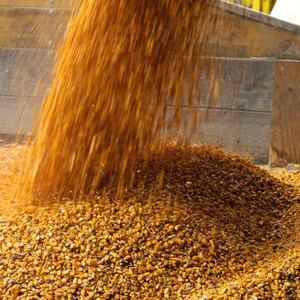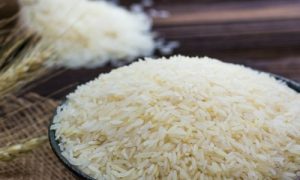Japan’s Grain Market: Modest Growth Expected with CAGR of +0.5%

Japan’s grain market is set to grow modestly, with a projected CAGR of +0.5% in volume and +1.7% in value through 2035. Consumption fell to 32M tons in 2024, while imports declined to 21M tons. Paddy rice dominates production. Maize leads imports. Market dynamics are shaped by stable yields, flat production, and shifting trade flows.
The grain market in Japan is forecast to see a slight increase in performance, with a projected CAGR of +0.5% in volume and +1.7% in value from 2024 to 2035. This growth is fueled by rising demand for grain in the country, leading to a positive outlook for the market in the coming years. Market Forecast Driven by rising demand for grain in Japan, the market is expected to start an upward consumption trend over the next decade. The performance of the market is forecast to increase slightly, with an anticipated CAGR of +0.5% for the period from 2024 to 2035, which is projected to bring the market volume to 34M tons by the end of 2035. In value terms, the market is forecast to increase with an anticipated CAGR of +1.7% for the period from 2024 to 2035, which is projected to bring the market value to $20.6B (in nominal wholesale prices) by the end of 2035.
Consumption
Japan’s Consumption of Grain In 2024, the amount of grain consumed in Japan dropped to 32M tons, waning by -2.3% on 2023. In general, consumption showed a mild contraction. The most prominent rate of growth was recorded in 2016 when the consumption volume increased by 0.6%. Grain consumption peaked at 36M tons in 2013; however, from 2014 to 2024, consumption remained at a lower figure.
The value of the grain market in Japan declined to $17.1B in 2024, reducing by -14.6% against the previous year. This figure reflects the total revenues of producers and importers (excluding logistics costs, retail marketing costs, and retailers’ margins, which will be included in the final consumer price). Overall, consumption recorded a relatively flat trend pattern. Over the period under review, the market reached the maximum level at $20B in 2023, and then fell in the following year.
Consumption By Type
Maize (15M tons), paddy rice (10M tons) and wheat (6.3M tons) were the main products of grain consumption in Japan, together comprising 95% of the total volume. Barley, sorghum, buckwheat, oats, rye, millet, other cereals, canary seed, quinoa, triticale and fonio lagged somewhat behind, together accounting for a further 5%.
From 2013 to 2024, the most notable rate of growth in terms of consumption, amongst the key consumed products, was attained by other cereals (with a CAGR of +22.9%), while consumption for the other products experienced more modest paces of growth.
In value terms, paddy rice ($12.1B) led the market, alone. The second position in the ranking was taken by maize ($4B). It was followed by wheat.
From 2013 to 2024, the average annual growth rate of the value of paddy rice market amounted to -1.6%. With regard to the other consumed products, the following average annual rates of growth were recorded: maize (-1.1% per year) and wheat (-1.6% per year).
Production
Japan’s Production of Grain After two years of decline, production of grain increased by 1% to 12M tons in 2024. Overall, production, however, continues to indicate a relatively flat trend pattern. The most prominent rate of growth was recorded in 2021 when the production volume increased by 2.5% against the previous year. Grain production peaked at 12M tons in 2014; however, from 2015 to 2024, production stood at a somewhat lower figure. Grain output in Japan indicated a relatively flat trend pattern, which was largely conditioned by a relatively flat trend pattern of the harvested area and a relatively flat trend pattern in yield figures.
In value terms, grain production contracted significantly to $11B in 2024 estimated in export price. The total output value increased at an average annual rate of +1.6% over the period from 2013 to 2024; the trend pattern indicated some noticeable fluctuations being recorded throughout the analyzed period. The most prominent rate of growth was recorded in 2019 when the production volume increased by 39% against the previous year. Over the period under review, production reached the maximum level at $15B in 2016; however, from 2017 to 2024, production failed to regain momentum.
Production By Type
Paddy rice (10M tons) constituted the product with the largest volume of production, comprising approx. 89% of total volume. Moreover, paddy rice exceeded the figures recorded for the second-largest type, wheat (1M tons), tenfold. The third position in this ranking was held by barley (233K tons), with a 2% share.
From 2013 to 2024, the average annual rate of growth in terms of the volume of paddy rice production was relatively modest. With regard to the other produced products, the following average annual rates of growth were recorded: wheat (+2.3% per year) and barley (+2.2% per year).
In value terms, paddy rice ($11.8B) led the market, alone. The second position in the ranking was held by wheat ($289M). It was followed by barley.
From 2013 to 2024, the average annual growth rate of the value of paddy rice production stood at -2.0%. With regard to the other produced products, the following average annual rates of growth were recorded: wheat (+1.2% per year) and barley (+1.5% per year).
Yield
The average yield of grain in Japan totaled 6.3 tons per ha in 2024, approximately equating 2023. Overall, the yield showed a relatively flat trend pattern. The most prominent rate of growth was recorded in 2021 with an increase of 3%. As a result, the yield reached the peak level of 6.4 tons per ha. From 2022 to 2024, the growth of the average grain yield remained at a somewhat lower figure.
Harvested Area In 2024, the total area harvested in terms of grain production in Japan amounted to 1.8M ha, remaining stable against 2023. Overall, the harvested area, however, showed a relatively flat trend pattern. Over the period under review, the harvested area dedicated to grain production reached the peak figure at 2M ha in 2013; however, from 2014 to 2024, the harvested area stood at a somewhat lower figure.
Imports
Japan’s Imports of Grain Grain imports into Japan dropped to 21M tons in 2024, which is down by -4% compared with the previous year’s figure. Overall, imports showed a slight shrinkage. The pace of growth appeared the most rapid in 2018 when imports increased by 2.3% against the previous year. Over the period under review, imports reached the peak figure at 24M tons in 2013; however, from 2014 to 2024, imports remained at a lower figure.
In value terms, grain imports fell markedly to $6.1B in 2024. In general, imports saw a pronounced descent. The pace of growth was the most pronounced in 2021 with an increase of 33%. Over the period under review, imports attained the peak figure at $8.9B in 2022; however, from 2023 to 2024, imports remained at a lower figure.
Imports By Country
The United States (8.7M tons), Brazil (6.6M tons) and Australia (2.5M tons) were the main suppliers of grain imports to Japan, with a combined 83% share of total imports.
From 2013 to 2023, the biggest increases were recorded for Brazil (with a CAGR of +4.2%), while purchases for the other leaders experienced mixed trend patterns.
In value terms, the United States ($3.1B), Brazil ($2.1B) and Australia ($860M) constituted the largest grain suppliers to Japan, together accounting for 82% of total imports.
Among the main suppliers, Brazil, with a CAGR of +4.6%, recorded the highest growth rate of the value of imports, over the period under review, while purchases for the other leaders experienced more modest paces of growth.
Imports By Type
In 2024, maize (15M tons) constituted the largest type of grain supplied to Japan, accounting for a 70% share of total imports. Moreover, maize exceeded the figures recorded for the second-largest type, wheat (5.2M tons), threefold. The third position in this ranking was held by barley (1.2M tons), with a 5.3% share.
From 2013 to 2024, the average annual growth rate of the volume of maize imports was relatively modest. With regard to the other supplied products, the following average annual rates of growth were recorded: wheat (-1.6% per year) and barley (-1.1% per year).
In value terms, maize ($3.9B) constituted the largest type of grain supplied to Japan, comprising 65% of total imports. The second position in the ranking was taken by wheat ($1.7B), with a 28% share of total imports. It was followed by barley, with a 5.6% share.
From 2013 to 2024, the average annual rate of growth in terms of the value of maize imports amounted to -1.7%. With regard to the other supplied products, the following average annual rates of growth were recorded: wheat (-2.6% per year) and barley (-2.2% per year).
Import Prices By Type
The average grain import price stood at $296 per ton in 2024, with a decrease of -14.1% against the previous year. Overall, the import price continues to indicate a slight downturn. The growth pace was the most rapid in 2021 when the average import price increased by 39% against the previous year. Over the period under review, average import prices attained the peak figure at $402 per ton in 2022; however, from 2023 to 2024, import prices failed to regain momentum.
Prices varied noticeably by the product type; the product with the highest price was fonio ($11,478 per ton), while the price for maize ($258 per ton) was amongst the lowest.
From 2013 to 2024, the most notable rate of growth in terms of prices was attained by fonio (+12.2%), while the prices for the other products experienced more modest paces of growth.
Import Prices By Country
The average grain import price stood at $345 per ton in 2023, dropping by -14.3% against the previous year. Over the period under review, the import price, however, recorded a relatively flat trend pattern. The pace of growth was the most pronounced in 2021 an increase of 39% against the previous year. Over the period under review, average import prices reached the peak figure at $402 per ton in 2022, and then contracted in the following year.
Average prices varied somewhat amongst the major supplying countries. In 2023, amid the top importers, the highest price was recorded for prices from Canada ($392 per ton) and the United States ($359 per ton), while the price for Argentina ($285 per ton) and Brazil ($315 per ton) were amongst the lowest.
From 2013 to 2023, the most notable rate of growth in terms of prices was attained by Canada (+0.7%), while the prices for the other major suppliers experienced more modest paces of growth.
Exports
Japan’s Exports of Grain
Grain exports from Japan soared to 329 tons in 2024, growing by 32% compared with the previous year. Overall, exports showed significant growth. The growth pace was the most rapid in 2014 with an increase of 1,548%. As a result, the exports attained the peak of 587 tons. From 2015 to 2024, the growth of the exports remained at a somewhat lower figure.
In value terms, grain exports soared to $476K in 2024. In general, exports continue to indicate a significant expansion. The most prominent rate of growth was recorded in 2014 when exports increased by 1,115% against the previous year. Over the period under review, the exports reached the maximum at $634K in 2020; however, from 2021 to 2024, the exports failed to regain momentum.
Exports By Country
Singapore (340 tons) was the main destination for grain exports from Japan, accounting for a 136% share of total exports. Moreover, grain exports to Singapore exceeded the volume sent to the second major destination, Hong Kong SAR (90 tons), fourfold. The third position in this ranking was held by the United States (45 tons), with an 18% share.
From 2013 to 2023, the average annual growth rate of volume to Singapore totaled +4.9%. Exports to the other major destinations recorded the following average annual rates of exports growth: Hong Kong SAR (+32.8% per year) and the United States (+30.8% per year). I
n value terms, the largest markets for grain exported from Japan were Singapore ($102K), Taiwan (Chinese) ($90K) and Hong Kong SAR ($46K), with a combined 60% share of total exports. The United States, Thailand and Ireland lagged somewhat behind, together accounting for a further 17%.
Thailand, with a CAGR of +105.5%, recorded the highest rates of growth with regard to the value of exports, in terms of the main countries of destination over the period under review, while shipments for the other leaders experienced more modest paces of growth.
Exports By Type
Maize (59 tons), paddy rice (39 tons) and barley (27 tons) were the main products of grain exports from Japan, together accounting for 61% of total exports.
From 2013 to 2024, the most notable rate of growth in terms of shipments, amongst the major product types, was attained by barley (with a CAGR of +39.3%), while the other products experienced more modest paces of growth.
In value terms, grain with the largest exports in Japan were millet ($112K), barley ($91K) and oats ($85K), with a combined 68% share of total exports. Other cereals, maize, paddy rice, buckwheat, wheat, sorghum, quinoa and rye lagged somewhat behind, together accounting for a further 32%.
Maize, with a CAGR of +30.2%, recorded the highest rates of growth with regard to the value of exports, in terms of the main product categories over the period under review, while shipments for the other products experienced more modest paces of growth.
Export Prices By Type
In 2024, the average grain export price amounted to $1,447 per ton, waning by -8.9% against the previous year. Overall, the export price, however, saw a slight expansion. The most prominent rate of growth was recorded in 2017 an increase of 80%. The export price peaked at $2,492 per ton in 2019; however, from 2020 to 2024, the export prices remained at a lower figure.
Prices varied noticeably by the product type; the product with the highest price was quinoa ($22,000 per ton), while the average price for exports of rye ($18 per ton) was amongst the lowest.
From 2013 to 2024, the most notable rate of growth in terms of prices was recorded for the following types: wheat (+30.1%), while the prices for the other products experienced more modest paces of growth.
Export Prices By Country
The average grain export price stood at $1,588 per ton in 2023, dropping by -27.3% against the previous year. Overall, the export price, however, posted a noticeable expansion. The pace of growth was the most pronounced in 2017 when the average export price increased by 80%. Over the period under review, the average export prices attained the maximum at $2,492 per ton in 2019; however, from 2020 to 2023, the export prices stood at a somewhat lower figure.
Prices varied noticeably by country of destination: amid the top suppliers, the country with the highest price was Taiwan (Chinese) ($2,356 per ton), while the average price for exports to Ireland ($109 per ton) was amongst the lowest.
From 2013 to 2023, the most notable rate of growth in terms of prices was recorded for supplies to Pakistan (+185.8%), while the prices for the other major destinations experienced more modest paces of growth.
To Read more about Wheat News continue reading Agriinsite.com
Source : Index Box














